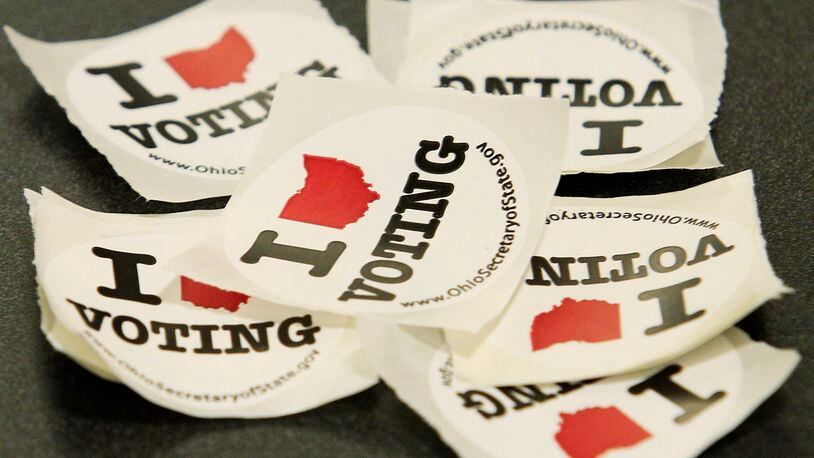The goal, Antani said, is to keep out-of-state interests out of Ohio politics.
“It is time for Ohioans to take our initiative process back and stop well-funded, out-of-state special interests from coming into our state and wreaking havoc,” Antani said in announcing the resolution.
RELATED: What is Ohio Issue 2?
The joint resolution would amend Ohio’s constitution and would have to go before voters to be approved if passed by the legislature.
The measure would also ban campaigns from paying the people who collect signatures for ballot issue petitions.
“It should be difficult,” Antani said of the process to get something on the ballot. “You’re amending the constitution.”
The proposed rules would apply to both citizen initiated constitutional amendments and initiated statutes.
Antani cited the recreational marijuana issue in 2015 and the current Issue 2 on prescription drug prices as instances when out-of-state groups funded measures on Ohio’s ballot.
Support for Issue 2 has been almost entirely funded by the AIDS Healthcare Foundation, a California-based non-profit that serves 800,000 HIV and AIDS patients around the globe, including in Ohio.
The non-profit spent more than $1.8 million on a consulting company to hire petition signature gatherers. The price-per-signature to get Issue 2 on the ballot was $10.13.
Antani said he had to go back 13 years, to the Ohio Definition of Marriage amendment in 2004 to find a ballot issue that was initiated at a grassroots level in Ohio.
Financial support for that ballot issue came mainly from Citizens for Community Values, which is an Ohio organization, but is an arm of the national Family Research Council, which pushed same-sex marriage bans across the country in the early 2000s.
“Time and time again for the last 13 years it has been special interests and out-of-state interests,” Antani said.
RELATED: Ohio’s drug price ballot issue: What’s really going on?
Ohio’s process to get measures on the ballot and ultimately change the state constitution is fairly minimal compared to some other states and to the federal process, according to Mark Caleb Smith, director of the Center for Political Studies at Cedarville University.
“Making it harder to amend the constitution isn’t necessarily a bad thing,” he said.
Every change that makes it harder for out-of-state interests to get on the ballot, however, will also make it harder for Ohio residents to initiate a ballot issue.
“It’s interesting to be pushing this direction when it looks like politics across the country is becoming more populous,” Smith said. “I’m not sure how it will fit politically.”
Other states require a supermajority to pass constitutional amendments, but no others have that high of a threshold for passing state statutes, according to Ballotpedia, a non-partisan elections resource.
Florida and Illinois require a 60 percent supermajority to pass a constitutional amendment. Colorado just increased the threshold to 55 percent.
RELATED: Issue 2 is most expensive ballot issue in Ohio history
No other state bans payment to those who collect signatures, according to Ballotpedia, but some ban paying them per signature. Ohio had such a ban, but it was struck down by a federal court in 2006 as unconstitutional.
Of 76 citizen-initiated measures on statewide ballots in 2016, only seven were achieved using volunteers to gather signatures. Those occurred in North Dakota and South Dakota where about 13,000 signatures were required per ballot measure compared to Ohio’s more than 180,000 for Issue 2 and more than 300,000 for Issue 1 this year.
YOUR ELECTION SOURCE
Voters guide: Find out what is on your ballot in our interactive voters guide at vote.daytondailynews.com
Live election results: Look for up-to-the minute election results on our website starting at 7:30 p.m. Tuesday.
Speak out: Tell us what you think of the issues on the ballot on our Ohio Politics Facebook page
Special epaper for subscribers: Look for election coverage Wednesday morning in your electronic edition of the newspaper, along with the latest results at daytondailynews.com/epaper
Thursday newspaper: Get in-depth analysis on the key races and issues, what voters decided and how it will impact you and your wallet.
WHIO TV Channel 7: Watch a special edition of WHIO Reports this morning at 11:30 highlighting what's on the ballot Tuesday.
Special WHIO Radio program: Listen to AM 1290 and News 95.7 WHIO Tuesday night starting at 8 for a live, 3-hour election special with reports from Dayton, Springfield, Columbus and around the region.
About the Author
